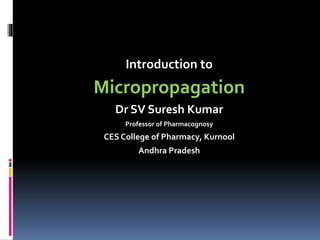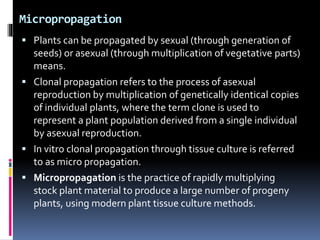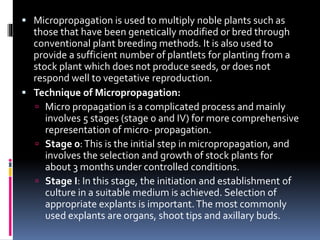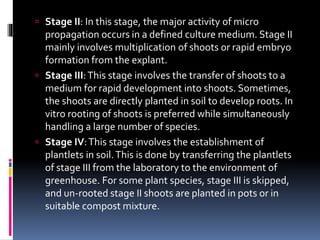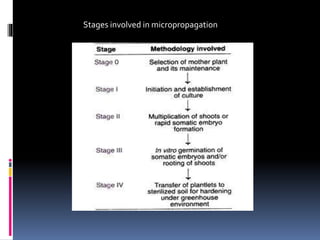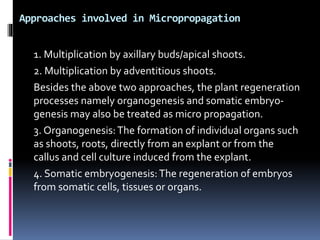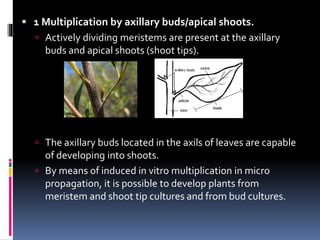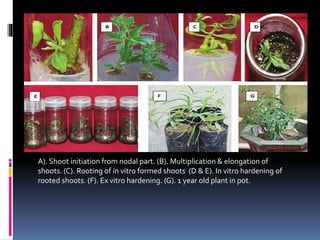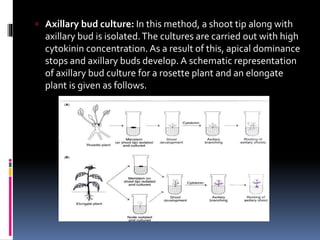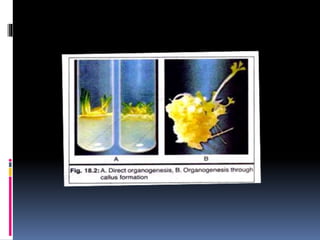Micropropagation is the process of rapidly multiplying stock plant materials using modern tissue culture methods. It involves 5 main stages: selection of stock plants, initiation and establishment of culture, multiplication of shoots, rooting of shoots, and establishment of plantlets. The two main approaches are multiplication through axillary buds/apical shoots and adventitious shoots. Organogenesis and somatic embryogenesis are also used, where organs or embryos are formed directly or indirectly from explants. Micropropagation is useful for cloning noble plants and providing sufficient plantlets from stock plants that do not produce many seeds or vegetatively propagate well.
